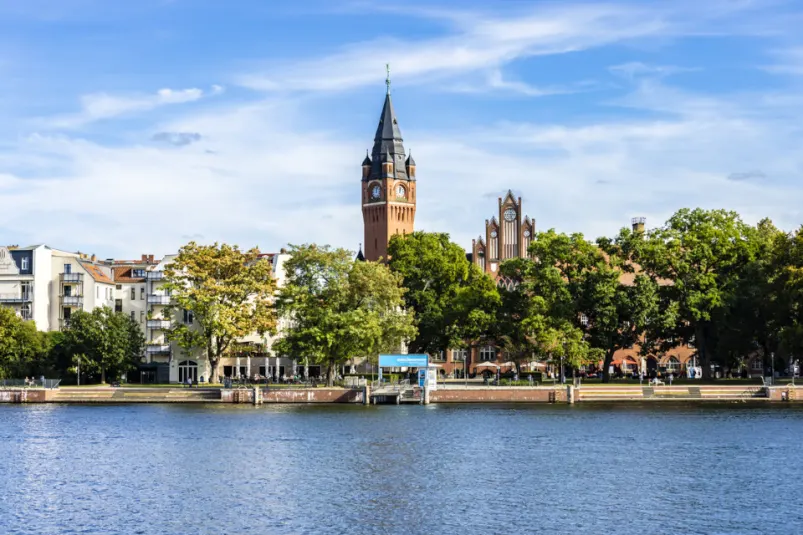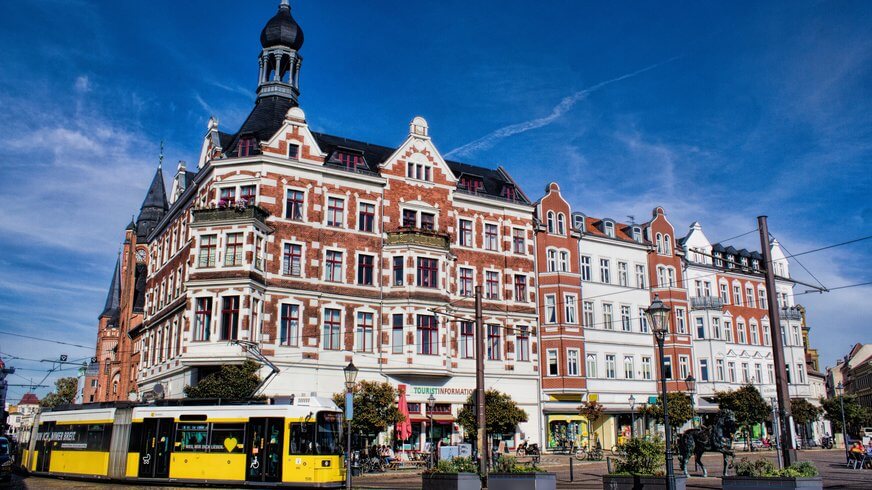9 Things to See and Visit in Berlin Köpenick

Köpenick isn't Berlin anymore, you might say. Well, it is! Once a small independent town in the south-east of Germany's great metropolis, this suburb at the confluence of the Dahme and Spree rivers has been a fully-fledged district of the German capital since 1920. This little corner of paradise, surrounded by greenery and located no less than 16 km from the famous TV tower, is just waiting for your visit to reveal its hidden charms. Today, Berlin Poche takes you on a tour of this underestimated district.
1. From Berlin Köpenick station to Parc Bellevue
First of all, to reach the Köpenick S-Bahn station from the city center, there aren't an infinite number of possibilities. If you don't fancy the idea of an hour's bike ride and a swim, you'll have to take the S3 towards Erkner. Departing from Ostkreuz station, a major rail hub on the public transport network to the east of the city, it will take you exactly 13 minutes to reach your destination.
Once we've arrived safely at Berlin's charming little Köpenick station, it's to the south exit that we head. The tour begins by walking along Borgmannstraße, then turning left onto Seelenbinderstraße to reach the entrance to the delightful Bellevue Park.
Make no mistake, this is by no means the park adjoining Bellevue Palace, which is located to the northwest of the large Tiergarten park on the banks of the Spree. In the south-western part of the park we're talking about here, there's an old pedunculate oak, known as the Bellevue oak, which has been classified as a natural site to be preserved.
2. The old film factory
Just outside the park, on the other side of Friedrichshagenerstraße, you'll find the Alte Filmfabric, which used to produce film for black-and-white photography and other items for the practice of silver photography. The well-preserved red-brick buildings display an industrial style steeped in history.
In 1941, during the Second World War, the factories, then owned by the Kodak company, were confiscated as enemy property, only to be confiscated a second time by Soviet occupation forces during the Cold War. After being returned to Kodak in 1992, following the reunification of Germany, the former factory soon ceased to operate with the meteoric rise of digital photography.
Now a listed historic monument, the former factory has been transformed into a residential complex using the old red-brick buildings dating from 1920.
A little anecdote for fans of science-fiction series: some scenes from the German series Dark, set in the former Winden police station, were filmed in Building 22, at the entrance to the site.
3. Müggelspree
Once you've crossed the grounds of the former Filmfabrik, it's a setting with a very aquatic feel that awaits you. You've arrived∙e on the banks of the Müggelspree, reveling in a breathtaking view of the verdant gardens of the waterside villas and the small marina on the opposite bank.
The Müggelspree is the name given to a stretch of the Spree that stretches from the large Müggelsee lake to its confluence with the Dahme near Köpenick, where the river is known as the Treptower Spree. Take time to wave at the tourist boats on the water. You may also spot a few rowing boats and houseboats cruising along the river.
4. The unreachable island
The paved path along the water's edge leads to a suspension bridge overlooking the small island of Baumgarteninsel, accessible only by boat.
There are no footpaths leading onto the small island, which is planted with allotments - the kind of allotments that sprang up in Germany in the late 19th century. When the bridge over the Baumgarteninsel was built, the owners of the gardens decided not to build a direct access to the island, which today remains a small oasis of greenery that can only be contemplated from above.
5. A walk along the Dahme
Our tour continues along the old town promenade, towards the confluence of the two rivers. On the banks of the Dahme, a wide walkway welcomes strollers. A meeting place, the promenade, lined with kiosks and restaurants, is always lively, especially in fine weather.
6. The Town Hall and Captain Köpenick
Almost at the end of the walk, if you turn your head to the left at the small park, you'll see the town hall. The town is inhabited by the myth of the Captain of Köpenick, whose story marks the streets of the suburb in graffiti and simple souvenirs for tourists.
His story, which has entered the German language under the name of Köpenickiade, recounts that this famous captain was not in fact a captain, but a cobbler. Having acquired the uniform of a captain of the first regiment, and placed some 10 men under his command, he stole the town's treasury and fled on the train to Berlin. He was arrested a few days later after an old comrade, who knew about the coup, gave the police some information in return for a generous reward.
A statue of the captain still stands in front of the town hall, in memory of this stroke of genius.
7. The main square

Once you've passed the town hall, you'll come upon the main square of Köpenick's old town, with its undeniable appeal. The facades of the post-war “Altbau” buildings seduce with their old-world charm and ochre colors, enhanced by white frames and light-colored facades that contrast with the beautiful blue summer skies and stand out particularly well against a wintry backdrop.
At the center of this folkloric setting, on the cobbled square, sits Germany's smallest brewery, where you can sample all kinds of beer, whether lager, brown ale, IPA or other fruity creations. Brewed on site, these gaseous beverages are still concocted according to German beer-making regulations, literally the “loie of purity” dating from 1514.
This tiny, fully-glazed premises welcomes you every day of the week. It also has a large terrace directly on the castle square, which is very pleasant on sunny days.
Don't hesitate to venture out into the pretty little streets to discover the many cafés, antique bookshops and other stores that liven them up.
8. Köpenick Castle
Visible from the square on the other side of the Müggelheimer main road, Köpenick Castle stands on a wooded peninsula surrounded by English-style parkland.
Part of Berlin's Museum of Applied Arts, this historic site is open to visitors from Tuesday to Sunday, 11 am to 6 pm. You'll discover collections of interior art dating back to the Renaissance, Baroque and Rococo periods.
If you don't have the time or inclination to linger there, you can simply stroll through the gardens and enjoy the river view of the Dahme with its boats and old rowboats sailing in a crystal-clear setting overlooking the small fishermen's quarter on the opposite bank.
9. The fishermen's quarter
Our journey finally takes us to the historic fishermen's quarter, with its traditional low-rise houses and charming cobbled streets. Full of charm, this ancient suburb is well worth a visit.
The Krokodil restaurant, with its riverside outdoor terrace, is the perfect place to take a break and enjoy some simple, but very good food, while admiring the sunset at dusk. A well-deserved reward after a day of wandering and discovering the little wonders that the beautiful Köpenick district has to offer.
My recommendation: Restaurant Krokodil: Gartenstraße 46-48, 12557 Berlin.

Céleste Roux
Writer
As a philosophy student, passionate about art and literature, I fell in love with the city of Berlin, which has become my home and daily inspiration. I love to walk its streets and let myself be surprised by what this constantly changing city has to offer, always on the lookout for new places.